
Pole bending is a great sport to try, whether you want to compete or just have fun! It improves your horsemanship skills and gives your horse a task to do.
Sometimes pole bending can seem complicated because there are so many poles to quickly maneuver around, but the most important advice is to keep it simple. The following are some tips to keep pole bending simple so that it doesn't feel as though you are ducking and diving through a forest of trees.
PARTS OF THE PATTERN
When training a horse for pole bending, one important concept is to maintain consistency. Basically, do the same thing in the same way so that your horse begins to build confidence in what he is doing.
There are certain points to hit on the pattern that will build you and your horse's confidence and help you to stay accurate as you get faster. The four main parts of the pole bending pattern are the run down, the end poles, the weave, and the run home.
When training your horse, start at the walk, then trot, and then progress to the canter over time. If you go too , you might end up hitting poles or losing control on the pattern, which can lead to bad habits in your horse.
As you become more advanced, you can adjust the distance you travel from the poles to better suit your horse, but remember to remain consistent.
THE RUN DOWN
On the run down, it's important to stay straight while moving parallel to the poles. I tend to stay about 4 to 6 feet away from the poles, depending on the horse I am riding. Some horses need a little more space to make the first turn.
この記事は Young Rider の January-February 2024 版に掲載されています。
7 日間の Magzter GOLD 無料トライアルを開始して、何千もの厳選されたプレミアム ストーリー、9,000 以上の雑誌や新聞にアクセスしてください。
すでに購読者です ? サインイン
この記事は Young Rider の January-February 2024 版に掲載されています。
7 日間の Magzter GOLD 無料トライアルを開始して、何千もの厳選されたプレミアム ストーリー、9,000 以上の雑誌や新聞にアクセスしてください。
すでに購読者です? サインイン
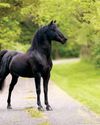
The MORGAN
The Morgan can do any equestrian sport while also having the personality of a family pet.
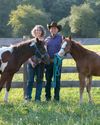
LEFT ALONE
Stacy Westfall's orphaned foal thrives by finding a friend.

Wild Rose Trainers
Young trainers and Mustangs learn from each other in a unique program.

HAPPY CAMPERS
Now is the time to find the perfect horse camp for the summer.
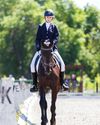
Dressage Details
Achieve better harmony with your horse using dressage training.
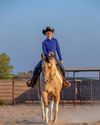
Side to Side
Position yourself for a perfect sidepass.
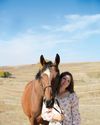
MY BUSINESS JOURNEY
Emma wanted to give her riding outfits a colorful touch, and ended up launching a successful belt business.
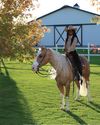
A Heart to Serve
Cavannah Hansen uses her talents and horses to help others in a variety of ways.
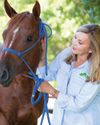
Animal Behaviorist
Are you interested in helping improve horse or pet interactions with their owners? This may be the career path for you.

SIX THINGS YOU DON'T KNOW ABOUT ME
Esme shares some secrets as to why this major YouTube star isn't so different from you and me.